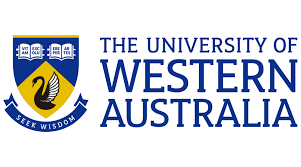University of Western Australia: Journey to the SKA telescope and beyond the Milky Way
The International Centre for Radio Astronomy Research, a joint venture between The University of Western Australia and Curtin University, has been instrumental in the creation of new virtual reality documentary Beyond the Milky Way.
Guided by scientists, experts and the traditional owners of the region — descendants of some of the world’s first astronomers —the documentary allows viewers to step on to the future West Australian site of the Square Kilometre Array telescope and shows the sky in 360°.
Pete Wheeler, ICRAR’s Communications, Outreach & Education Manager, approached White Spark Pictures at the start of last year with the idea to create a VR documentary about the Murchison Radio-astronomy Observatory.
“White Spark already had an award-winning production under their belt called The Antarctica Experience, which has become one of the top 10 highest-grossing Australian documentaries ever made,” Mr Wheeler said.
White Spark Pictures Producer Jess Black on site at the Murchison Radio-astronomy Observatory with ICRAR astronomer Dr Natasha Hurley-Walker and the 360-degree camera used to shoot the documentary. Credit: Pete Wheeler, ICRAR
“I had always wanted to do something in VR and the ICRAR outreach team had been dabbling in the domain for several years with content like GLEAMOSCOPE VR.
“I saw a natural parallel between Antarctica – a remote location, most people will never get to meet, doing science – and the observatory in the Murchison.”
White Spark Pictures liked the idea, so Mr Wheeler pitched it to colleagues in the Federal Government and then CSIRO to gain support and funding. Mr Wheeler then raised a third of the $700,000 budget to make the 25-minute film, narrated by British physicist and TV science presenter Professor Brian Cox.
“I helped them shoot it in the Murchison – I even shot some of the overnight astrophotography scenes myself, holed up in a Prado every night for the best part of a week despite temperatures getting down to a couple of degrees,” Mr Wheeler said.
“Even with bad weather all year, COVID lockdowns, technical problems and hordes of flies, we’ve been on a fantastic journey to film the telescopes at the observatory and capture the deep indigenous culture of the Murchison region.”
The film screens at WA Museum Boola Bardip from Saturday December 11 to Monday February 14. For young visitors and those unable to wear a VR headset, the film is also projected in a 2D cinema format.
This production is supported and sponsored by ICRAR, DISER, CSIRO, Pawsey, ASTRO 3D, the WA Museum, Scitech, Inspiring Australia, SKAO, SKA Australia, Screen Australia, Lotterywest and Screenwest.

